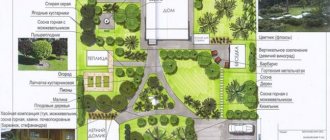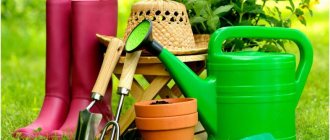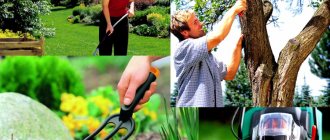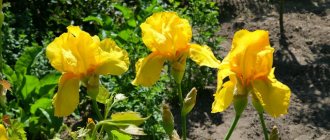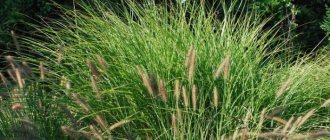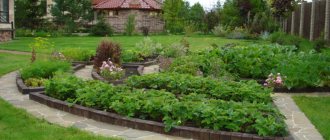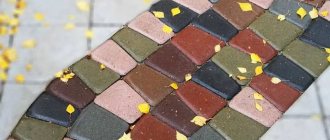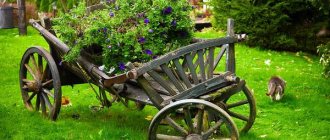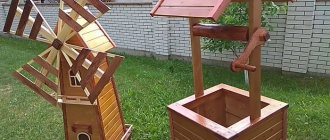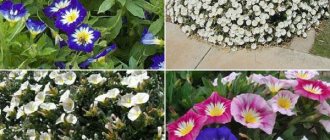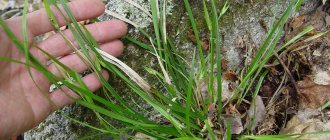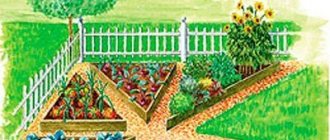One of the most important things in gardening is using the right tools. If you have the wrong tool, it is difficult to complete the job. That’s why it’s so important to know what tools you need to use and why when working in the garden.
The current range of garden tools is truly amazing. Everything you need for work can be bought in specialized stores and shopping centers. But even among this diversity, we can highlight the top 10 tools for working in the garden, which every gardener, both beginner and experienced, simply must have.
Basic equipment for cultivating land, caring for plants, shrubs and trees
In the arsenal of gardening tools every gardener and gardener must have a bayonet and shovel.
When choosing a shovel, pay attention to the following points.
The material of the blade must be made of steel. Shovels made from forged steel are considered to be of the highest quality.
The tulleka is the part that holds the handle in rigid adhesion to the shovel blade. It is recommended that the tulle and the fabric be stamped as a single unit (solid), and not welded to each other.
Pay attention to the presence of stiffening ribs on the plane of the product. They extend the life of the shovel.
The shovel handle must be made of hard wood (oak, alder, aspen). A T- or V-shaped handle at the end of the shaft provides additional convenience while shoveling. The handle can be made of high-quality plastic. It is not inferior in strength to wood, durable, lightweight and not afraid of deformation.
It is very important to plant the cutting deeply into the crown, and then secure and trim it so that it does not interfere with digging.
Failure to follow this rule can lead to quick failure of the shovel, even if you bought high-quality products.
Forks are one of the most common gardening tools. A four-prong fork with slightly curved teeth and a downward center of gravity can replace a shovel when digging soil and collecting root crops. In addition, with a pitchfork you can rake up garbage, aerate and loosen the soil, move loose plant waste, and prepare humus and compost. That is why they should also be included in the list of mandatory garden tools.
It is recommended to buy forks with a handle ending in a T-shaped handle, which, in addition to increasing ergonomics, also prevents lateral rotation of the forks in the hands.
A hoe (hoe) is one of the main tools for caring for a vegetable garden, which is used to form depressions and grooves in the soil for planting seeds, for hilling plants, in the fight against weeds, and for loosening the soil.
You can purchase several hoes: one for forming depressions for planting seedlings, another for weeding beds, and a third for loosening the soil and hilling up plants.
An alternative option is a universal hoe: its blade should be made of carbon steel and have a thickness of at least 2 mm, with a lightweight handle made of aluminum or wood. The tulleka must be securely welded to the blade (main part).
It must be remembered that the hoe requires periodic sharpening as needed.
If your garden has soft soil, then your list of garden tools can include a hand-held cultivator, which fluffs up compacted soil, fights soil crust and cuts off weeds.
With hard soil and high density of weed growth, using a hand cultivator in the garden bed will be problematic.
The list of garden tools also includes special tools for pruning and trimming the crowns of garden trees and removing side shoots from plants:
- Secateurs are used to trim thin branches. Depending on the work to be done, choose the appropriate model of the tool: for raw wood, a flat pruner is used, and for dry branches - with an anvil (contact). To process trees with thick knots, use pruning shears with a ratcheting mechanism. For grafting pruning, choose a special pruner that makes a shaped cut that allows you to connect 2 branches together as tightly as possible.
- Garden shears are used to work with hedges, grass, and young shoots. With this tool you can give any shape to ornamental plants. The stem that can be trimmed with such a tool should not exceed 1-1.5 cm in diameter. To work with grapes, choose scissors with narrowed blades.
- A lopper is a special type of pruner that has long handles for two-handed operation. Due to this design, the pressing force increases. This allows you to trim thicker and stronger branches. Loppers with an extended telescopic stand are called pole pruners. If secateurs and garden shears are usually included in the list of mandatory garden tools, then loppers and pole cutters are usually not included in it. It all depends on the financial capabilities of a particular gardener or gardener.
When choosing tools for pruning branches and shoots, special attention should be paid to the maximum cutting diameter. To process fruit trees, you will need models that allow you to cut branches with a diameter of 2 to 4.5 cm. For thicker branches and trunks, you need to use a hacksaw (hand saw). For spring and autumn processing of an orchard with a large number of trees, a chainsaw is used.
To dispose of cut branches and shoots, a garden shredder is used - a device designed to grind plant residues. A shredder should be part of the gardening tool arsenal for those gardeners who prepare compost annually.
Growing plants also requires the availability of the necessary garden tools for irrigation:
- A watering can is indispensable in small areas (beds, flower beds, greenhouses) and for watering young trees and shrubs, when it is necessary to evenly moisten the tree trunks.
- A garden barrel is a container for water, which is usually used for watering the garden, as washstands, and for washing garden tools, vegetables or fruits. A water barrel should be included in the list of required gardening equipment, even if your site has running water. The garden should always have a minimum supply of water in a barrel in case it is turned off.
- A garden bucket can be galvanized or plastic. Its volume must correspond to the physical capabilities of the gardener.
- To ease the labor-intensive process of irrigating plants in the garden, among the garden tools there should be a watering hose. When purchasing it, it is recommended to choose a hose that is not made of transparent material. Otherwise, under the influence of the sun, algae will bloom in it.
Are gloves needed?
Before thinking about equipment stands, you need to prepare gloves, since this is the type of accessory that will allow you to protect your hands from the ground as much as possible.
Today you can find a wide variety of types on sale, differing not only in the material from which they are made, but also in size, color, and purpose.
If you neglect gloves, then the soil will simply remain under your nails, and your hands will be so dirty that you most likely won’t even be able to wash them yourself the first time.
Gloves not only protect your skin from dirt and dust, but also from exposure to chemicals when used to process plants.
How to bend a pipe - recommendations and tips for doing work at homeGasoline motor pump - we pump water without being tied to an outlet, basic requirements for the device
- Do-it-yourself wood splitter - mechanized help when preparing firewood for the winter (photo + video)
Auxiliary garden tools
A sprayer should also be included in the gardener's list of gardening equipment. When using a sprayer that sprays insecticides, fungicides and other substances hazardous to health, you must wear a respirator.
Modern technologies make it possible to create devices that help gardeners in controlling pests or choosing a place to plant plants. Therefore, it is advisable to include an insect repeller and a tester for measuring pH levels in the list of auxiliary garden tools.
- The repeller for insects, moles or small rodents generates various sound waves. Thanks to this, some types of pests do not appear on the site. It is necessary to periodically check the battery charge level of these devices;
- A tester for measuring pH (acidity), humidity, soil temperature and light levels will help you choose a good location for the bed or add substances that correct the composition of the soil.
To solve lighting problems in a summer cottage or garden, it is recommended to use an autonomous LED lamp with a solar-powered motion sensor. As a rule, such LED lamps are hung on a wall, in a gazebo, on a veranda, above the front door or in a garage. Solar batteries built into the lamp allow you to recharge the batteries during the day, and the use of LEDs allows you to use energy very economically. Therefore, such lamps do not need to be connected to wires and have a long service life. In addition, the use of LED lamps allows you to achieve ultra-bright lighting.
When choosing a solar-powered LED light with a motion sensor, pay attention to the following points:
- The lamp must have a function that allows, if necessary, to switch on the operating mode for continuous illumination.
- Usually such lamps are attached to the surface using Velcro. It is advisable that the housing have holes for fastening with screws or nails. Then, outside the season, the lamps can be removed without much effort so that no one steals them.
- The larger the area of the solar panel of the lamp, the better. This will allow, all other things being equal, to charge the built-in batteries faster.
- The lamp body must be waterproof.
- The lamp provided the ability to adjust the automatic shutdown time after triggering from a motion sensor.
The picture shows one of these street lamps with the following main characteristics:
- Luminous flux - 1200 Lumens
- Operating temperature - 40°С to + 55°С
- Analogous to an incandescent lamp in power -100 watts
- Ultra-precise motion sensor - yes
- Automatic shutdown after 30 seconds
- Continuous operation resource - 100,000 hours
- Solar battery -0.55 W
FUJIWARA grafting pruner
Grafting pruners have just begun to announce their existence to the world. But, even in a short period of time, this garden tool has become indispensable for grafting.
The high quality of this device allows you to make precise cuts, which is why the cuttings and leads are simply perfectly connected to each other.
Convenient storage is provided by an ergonomic case. It contains everything you need - the pruner itself, 3 different knives, an adjustment key and a screwdriver. A foam layer attached to the plastic walls of the case protects against damage during transportation.
I recommend a reliable tool for only 1017 rubles.
